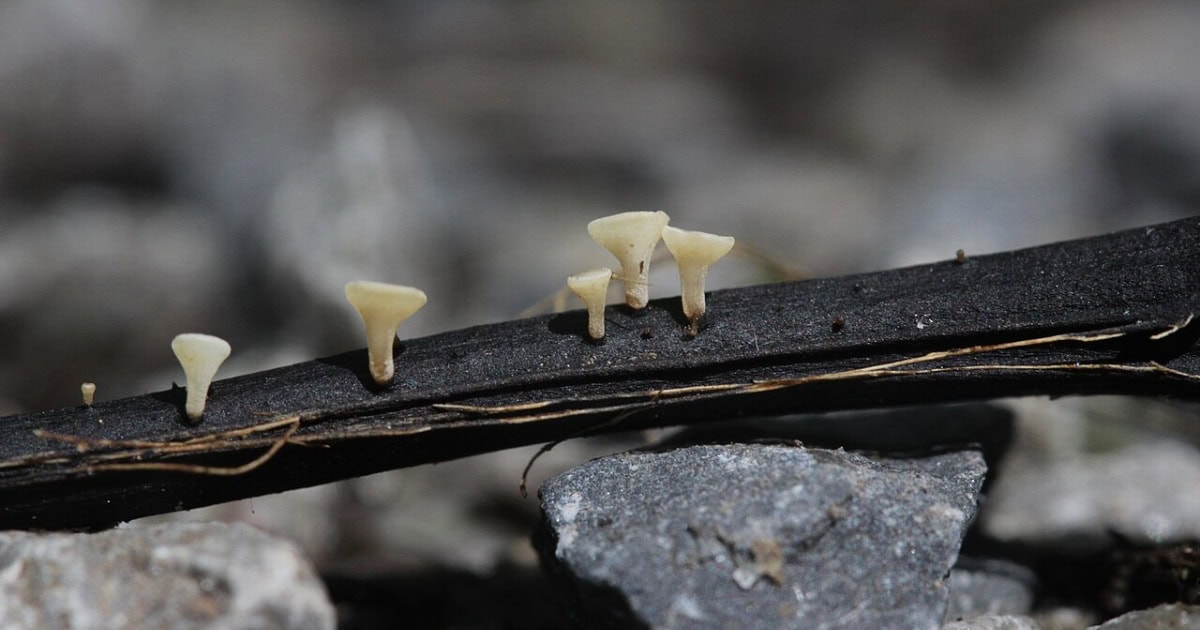Ash dieback myth-busting: can fungicides cure it?

Introduction
Definition: Ash dieback is a fungal disease of ash (Fraxinus) caused by Hymenoscyphus fraxineus. It leads to leaf blackening, shoot dieback and—on many trees—decline or death. There’s no cure. Management is risk-led: identify hazards, keep people safe, and retain safer, healthier ash where possible (Forest Research, 2025; GOV.UK, 2021).
- There’s no fungicide cure for ash dieback in the UK. Some injections can suppress symptoms on individual, high-value trees—with repeat treatments and close monitoring.
- Best identification window is July–September. Look for diamond-shaped lesions at last year’s nodes, summer leaf blackening, and a thinning crown.
- In the North West, focus on roadsides, PROWs, access tracks, coastal exposures and clay soils. If a target sits beneath an affected ash, book a survey.
Ash dieback disease: the fungicide myth—straight answers for owners
Short answer: no—fungicides don’t cure ash dieback. In Britain there are no fungicides approved for controlling H. fraxineus at forest scale. National guidance emphasises risk-based management, not spraying (Forestry Commission/GOV.UK operations notes; GOV.UK, 2021).
What about injections? A handful of research trials—mainly on young trees in controlled conditions—report that certain injected fungicides can slow lesion development after inoculation. That’s suppression, not reversal, and only with repeat treatments. Injections also create wound points, need careful timing and access, and quickly become uneconomic except for high-value specimens (Rozsypálek et al., 2023; Forest Research, 2025). In the North West, we occasionally consider them for heritage trees with low public exposure and strong monitoring in place—but never as a blanket “treatment programme.”
If you’re being sold a miracle cure, ask three things:
- What product approval covers ash dieback in the UK?
- What re-treatment interval is proposed for suppression, not cure?
- What risk plan addresses the site targets (roads, PROWs, play)?
Ash dieback lookalike note: spring anthracnose and drought stress can mimic early leaf symptoms; always confirm diamond lesions at nodes mid-summer before decisions.
If you’re offered a “cure”, get an independent survey and a written risk plan.
Ash dieback symptoms / what does it look like?
Best time to check: July–September. Earlier in the year, spring disorders and frost can confuse things. By late summer, patterns are clearer (RHS; Woodland Trust; Forest Research).
Leaves & shoots
- Blackening and wilting of leaflets and young shoots, often starting along the midrib and at the leaf base.
- Premature leaf drop in summer.
- Tapered shoot dieback from the tips into the crown.
Bark & branch unions (the clincher)
- Diamond-shaped lesions where side shoots and twigs meet the stem.
- Sunken, dark bark; beneath it, brown-grey discoloured tissue.
- Lesions can girdle a shoot in one season.
Crown & base
- Crown thinning—a “see-through” canopy compared with nearby trees.
- Epicormic shoots lower on the trunk (stress response).
- In wet stands, basal lesions may develop on the main stem—these are a stability red flag.
Two owner checks you can try today
- Compare two summers. Take a full-crown photo from the same spot this August and compare with last year’s view. You’re looking for progressive thinning and summer blackening (not just autumn colour).
- Scan last year’s nodes. Walk the main stem and primary branches, checking where last year’s side-shoots meet the wood. Diamond lesions at these nodes are strong indicators.
Ash dieback lookalike note: honey fungus, old pruning wounds and mechanical damage can produce discoloured bark, but they lack the typical diamond at nodes seen mid-summer.
If you see diamond lesions over a play area, lane or PROW, book a survey.
North West realities: wet summers, clay soils, roadside belts and PROWs
Our region throws some specific challenges at ash. Wet summers and clay soils compound root stress. Coastal winds push crowns and exploit weakened unions. Many ash lines sit along farm drives, access tracks and public rights of way, where targets are constant. In that setting, the question isn’t “does the tree have ash dieback?”—it’s “what’s the risk and what’s the plan?”
How we approach it locally
- Prioritise routes: roadside belts, school walking routes, canal paths and popular PROWs come first.
- Time inspections: a summer health check (July–September) for symptoms, plus a winter structural check for deadwood, unions and basal defects.
- Think access early: soft verges, narrow gateways, overhead lines and field conditions can dictate method and cost.
- Budget reality: a single-tree garden safety inspection typically sits £300; roadside belts require scoping (traffic management and PROW closure often dominate).
Ash dieback lookalike note: wind scorch or salt exposure near the coast can thin crowns too; use lesions at nodes to ground your ID.
If a PROW or lane runs beneath your ash, schedule a summer health check and a winter safety check.
What you can do now (simple steps)
1) Photograph well. Capture a full-crown shot and close-ups of leaf blackening, node lesions and the base. Good photos speed decisions (Forest Research photo guides).
2) Compare summers. Put 2024 and 2025 photos side-by-side from the same spot. Progression matters.
3) Keep access clear. If works are likely, check track bearing, turning space and any overhead utilities.
4) Report only if new. If you believe ash dieback is new to your area, report via Tree Alert; otherwise focus on management (Forest Research).
5) Book a survey where targets are present (roads, garden seating, play, buildings).
Ash dieback lookalike note: if it only shows in spring and resolves by midsummer, consider anthracnose rather than ADB.
If targets are present, get a written risk assessment—not just a quote.
Pros and cons of common actions
Retain & monitor
- Pros: keeps shade, screening and habitat; preserves potentially tolerant genetics noted across Britain.
- Cons: needs inspections; may still decline; target management required.
Selective pruning
- Pros: removes highest-risk parts; can buy time on lower-risk sites.
- Cons: repeat access; doesn’t halt disease.
Fell & replant
- Pros: resets risk where targets are unavoidable; chance to diversify species for site and soil.
- Cons: higher upfront cost; consents may apply (TPO/Conservation Area).
Ash dieback lookalike note: don’t fell on a hunch—use mid-summer evidence and a risk assessment.
If reduction won’t remove risk over a road or PROW, plan a timely fell and replant.
Case notes from recent North West work
Garden drive, South Lakeland (coastal wind-catchment).
A mature ash over a shared drive looked fine at a glance. Close-ups showed two diamond lesions at ~2 m and ~30% crown thinning. We agreed a 20% reduction and deadwood clearance, plus annual summer checks. The tree held acceptable risk for two seasons; year three, lesions expanded towards the base, and we moved to removal with mixed native replanting set back from the drive.
Rural PROW, Cheshire clay.
Five ashes along a sticky farm lane. Two had basal lesions in a wet verge and heavy footfall to a fishing pond. Decision: remove the two unstable stems under a short closure; retain three healthier trees with light end-weight reduction and monitoring, plus replacement planting away from the track.
Ash dieback lookalike note: on clay, drought-browned leaves can fool the eye—lesions at nodes settle the question.
If basal lesions meet wet ground on a public route, don’t delay—plan works.
Looking ahead: tolerant ash and why retention matters
We’re seeing pockets of apparently tolerant ash in the North West, echoing national findings. The Living Ash Project continues to select and archive tolerant lines from across Great Britain. That’s why, where risk is manageable, keeping safer, healthier ash in place matters: it supports future resilience and keeps options open for the landscape (Living Ash Project; Forestry review, 2025).
If a tree looks markedly healthier than its neighbours and it’s safe, retain it and monitor.
Clear, local next steps
If you’ve got ash over a lane, garden seating, play kit or a PROW, we can help. Tree Surveys North West covers Cumbria, Lancashire, Greater Manchester, Merseyside and Cheshire.
Book a summer health check or a winter safety survey:
Email: hello@treesurveysnorthwest.co.uk • Phone: 07794743952
FAQs
Is there a cure for ash dieback?
No. Some injections can suppress symptoms on specific, high-value trees with repeat treatments, but there’s no cure and no licensed forest-wide chemical control in the UK (Forest Research, 2025; GOV.UK, 2021; Rozsypálek et al., 2023).
What does ash dieback look like?
Summer leaf blackening, diamond-shaped lesions at branch unions, a thinning crown, and sometimes epicormic growth lower on the trunk (Woodland Trust; RHS; Tree Council).
Can an ash recover?
Some trees show tolerance and can persist. If risk is low, retain and monitor—your tree might be part of the future gene pool (GOV.UK, 2021; Forestry, 2025).
Should I fell my ash?
Fell where there’s an unacceptable safety risk to people, roads or property. Elsewhere, consider reduction and monitoring within a written plan.
When should I check?
July–September for leaf/shoot signs; winter for structure and deadwood.
Sources & further reading
- Forest Research (2025). Ash dieback (Hymenoscyphus fraxineus) — overview, ID and management; states no cure and risk-led approach.
- GOV.UK (2021). Managing ash dieback in England — retain safer, apparently tolerant trees where possible; risk-based decisions.
- Woodland Trust. Ash dieback — homeowner-friendly symptom checklist (incl. diamond lesions).
- RHS. Ash dieback — ID details for leaves, shoots and cankers.
- Tree Council (2020). Ash Dieback: A Guide for Tree Owners — basal lesion risks and practical owner advice (PDF).
- **Rozsypálek, J. et al. (2023).Urban Forestry & Urban Greening — tree-injection trials; suppression of necroses on young ash, not a landscape cure.
- **Schertler, A. et al. (2025).Forestry — review of tolerance/resistance and why retention matters.
- Living Ash Project (2024). Update on selection of tolerant lines across GB.
Quick disclaimer (UK)
This article offers general guidance for owners in North West England. Works to protected trees (TPO or Conservation Area) may need consent unless exemptions apply (e.g., urgent safety). Highways and PROW duties mean you should act reasonably and promptly where foreseeable risk exists. Always base actions on a qualified arboricultural survey.
Book in your tree survey today
Get clear, professional advice from qualified tree surveyors you can trust. Whether you need a report for planning, insurance, mortgages or safety, we’ll deliver accurate results fast.


